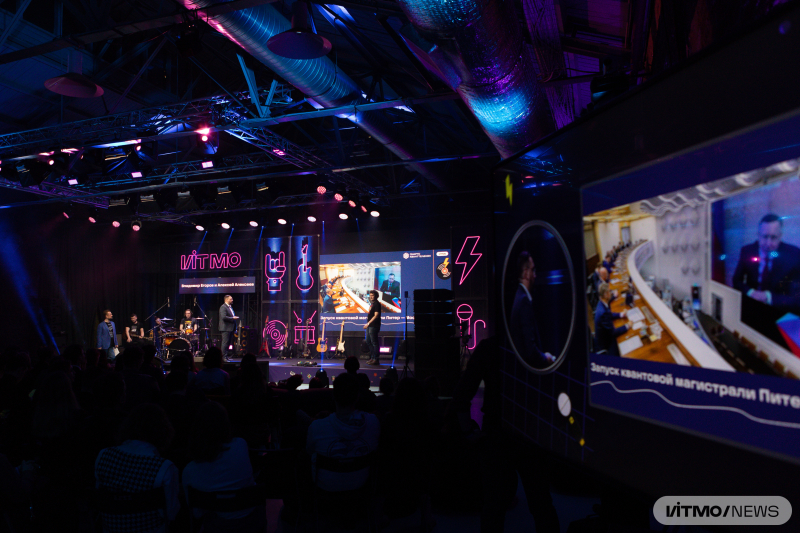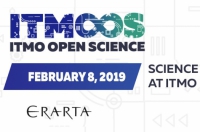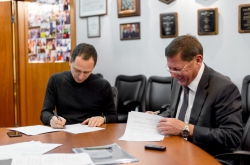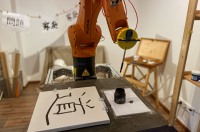Industrial electric drive
Partner. Diakont, a full-cycle enterprise offering products and solutions that enhance safety in the nuclear and gas sectors.
Research. From 2012 onward, ITMO and Diakont have implemented a series of research and R&D projects, among which are power, high-precision, ultrafast electric drives and a non-contact inspection method for non-destructive pipeline magnetic testing, which involves the use of a robot that can find defects in extended gas or heating pipes.
Since 2014, ITMO and Diakont have been working on sensorless control of electric drives, i.e. systems that convert electrical energy into mechanical one and the other way around. These devices are commonly used in industrial robots for automotive, aerospace, and other industries. Within this timeframe, the researchers managed to develop software that implements a rotor position sensor of a synchronous motor. This type of sensor replaces a mechanical device to measure rotation speed and angle. The experiments confirmed that the performance of the novel device is nearly in line with that of the physical sensor, which is rather expensive, requires more energy and special conditions, and takes up more space.
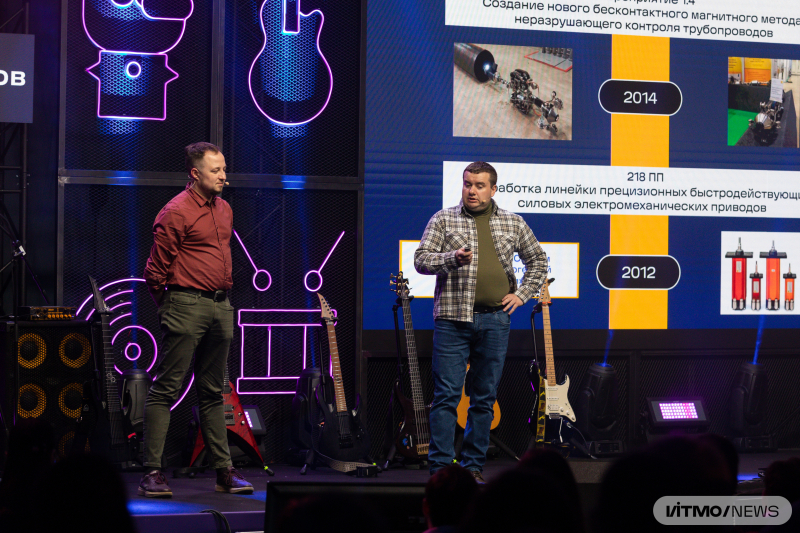
Mikhail Uvarov and Anton Pyrkin. Photo by Dmitry Grigoryev / ITMO.NEWS
All these developments paved the way for a smart electric drive that has recently achieved TRL 6 (Technology Readiness Level is a method for estimating the maturity level of technologies. Models or prototypes of TRL 6 are being tested in real conditions – Ed.). What the researchers propose is a drive that combines sensor-free control with reliable software, and can be used in a range of control systems. The intelligent sensor is based on a digital twin of the engine developed using mathematical models. A comparison of data from a mechanical sensor with modeled data can be used to assess the drive’s integrity.
“We decided to join the project to get experience in making both math formulas and programs that could be turned into products. We’ve already conducted research and experiments and now we’re going into the stage of production and operation. For several years now, ITMO’s been in the top 100 universities in Automation & Control, particularly thanks to our joint research. Business is harsh, and ITMO’s actively helping companies to make more profit. That’s why achieving industrial recognition is a challenge we’re doing our best to tackle,” says Anton Pyrkin, a professor and the dean of ITMO’s Faculty of Control Systems and Robotics.
Prospects. The electric drives are already being used to control welding tongs in the manufacturing of automobile bodies. As noted by Mikhail Uvarov, the head of the intellectual technologies center at Diakont, around 3,000 electrical drives were sold abroad. The technology can also be used in airplanes: unlike mechanical sensors that malfunction at heights, sensor-free technologies remain functional even at low temperatures.
Read also:
Digital Manufacturing and Automated Factories: ITMO Students Develop Projects for Diakont Company
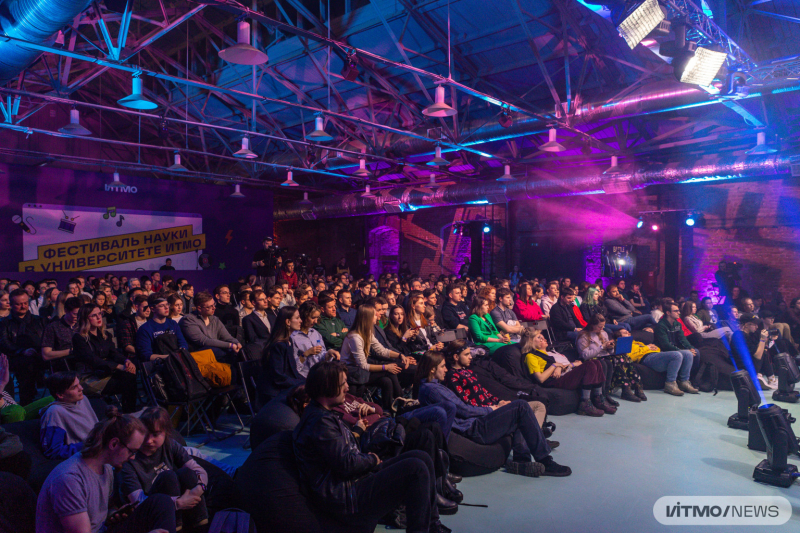
ITMO Open Science Rocks. Photo by Dmitry Grigoryev / ITMO.NEWS
Customer-centric AI for retail and banking
Partner. Bank Saint Petersburg, a Russian bank, which was established as a joint-stock company in 1990.
Research. ITMO and Bank Saint Petersburg have been partners since 2015. The bank provides banking services for the university and ITMO assists the bank with digitalization tasks. In doing so, the partners make use of a customer-centric artificial intelligence (AI) that helps the companies to predict, plan, and improve workflows based on customers’ motivations, internsions, and behaviors.
One of their joint projects was devoted to predicting deposit portfolios. The bank was tasked to develop a model and methods to predict the future values of term deposits, taking into account a range of crucial aspects: macroeconomics projections, the specifics of the client base, and management processes. What helped was the random forest method, which the partners used to develop various sales models, prolongation, and withdrawals of deposits of new and current customers.
Another project revolves around modeling credit portfolios. The task was to calculate how many reliable clients among legal entities the bank will be able to find. Aside from the last project’s outcomes, the specialists turned to client managers specializing in sales and repayments to tackle this challenge. Using machine learning methods, the partners built a model that can predict new loan transactions, assess the accuracy of expert assessments and their impact on forecasting, as well as predict loan portfolio debts.
Alexander Bukhanovsky, the head of ITMO’s School of Translational Information Technologies and Rinat Kutuev, the head of treasury at Bank Saint Petersburg, presented their developments at the recent ITMO Open Science conference.
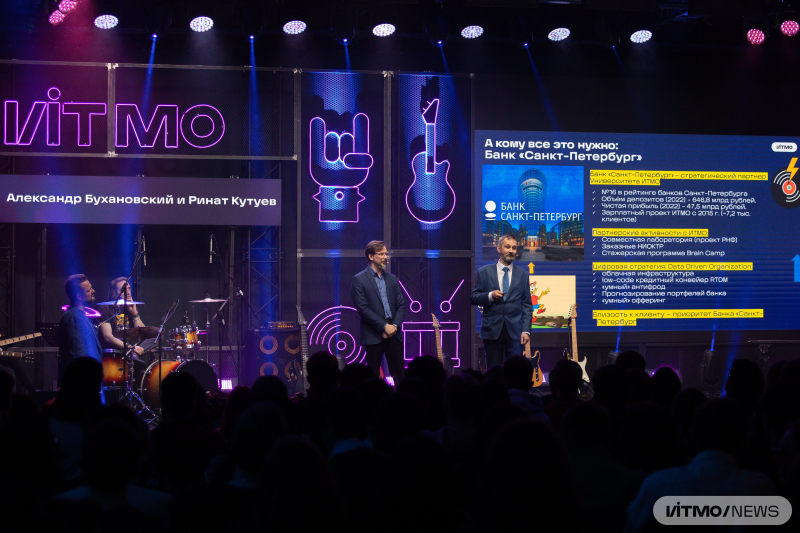
Alexander Bukhanovsky and Rinat Kutuev. Photo by Dmitry Grigoryev / ITMO.NEWS
Wireless electric car charger
Partner. Yablochkov, a technology company producing ultrafast charging systems for electric vehicles.
Research. As a result of this collaboration, ITMO and Yablochkov developed a wireless charger for electric vehicles. The charging system consists of a transmitter that will be integrated into the pavement; a receiver at the bottom of a vehicle; and the charger itself.
ITMO’s experts in radiofrequency power transfer developed the transmitter-receiver system that transfers energy via a magnetic field, while specialists from Yablochkov provided expertise in power electronics.
Read also:
The first prototype – with 95% energy efficiency and the capacity to transfer 11 kW – was ready in January 2022. According to Polina Kapitanova, the project’s supervisor and a senior researcher at the School of Physics and Engineering, apart from being more convenient than a standard charger, the new wireless one is more affordable, as it doesn’t rely on expensive connectors required for its conventional, wired, counterpart.
Prospects. The collaborators plan to release a 60 kW charger for electric buses first and then increase its capacity to 300 kW. Another upcoming feature is protection from external objects: when they get in the way of the transmitter-receiver system, the charger will shut down.
“Industry-research collaborations are important because our industrial partners tell us about the existing trends, which we can apply our scientific expertise to in order to quickly produce a product and introduce it to the market,” shares Polina Kapitonova.
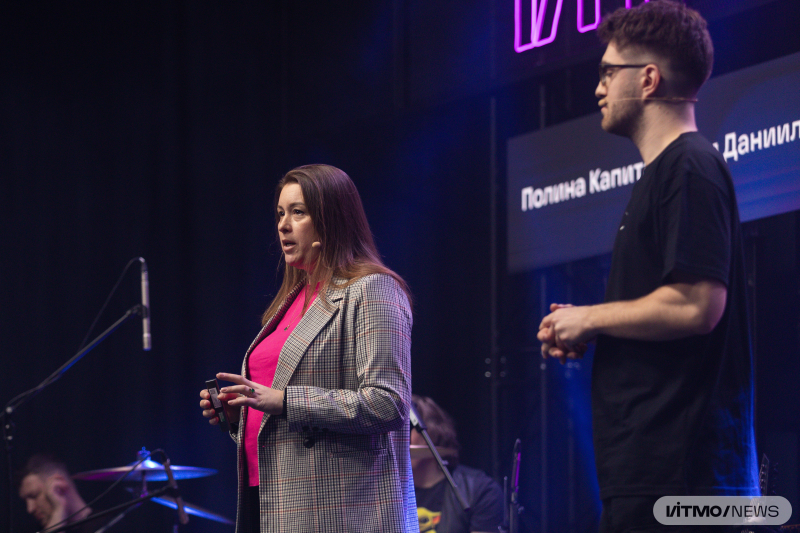
Polina Kapitanova and Daniil Sivolozhskyi. Photo by Dmitry Grigoryev / ITMO.NEWS
Quantum highway for protected communications
Partner. SMARTS-Quanttelecom, a company producing quantum cryptography systems.
Research. Within this partnership, the collaborators develop new information security systems based on quantum cryptography methods and quantum networks.
The biggest project of the partners is the first quantum highway in Russia, launched in 2021 between Moscow and St. Petersburg. For this, ITMO’s experts developed the core technology, trained the researchers that made up the key team of the company, and designed a quantum network with the associated control and monitoring systems. SMARTS-Quanttelecom, on their part, developed and produced quantum cryptography equipment.
“Our partnership is a unique case: a commercial company that grew out of a research lab. We still exchange our experiences and human resources. Our team is one of the few in the country that specializes in quantum communications and quantum key-based encryption systems. By combining industrial and research expertise, we can benefit from the best of both worlds,” comments Vladimir Egorov, the head of the Laboratory for Quantum Communications.
Prospects. Currently, the partners are constructing a quantum highway between Moscow and Nizhny Novgorod with the view to expanding it from St. Petersburg to Vladivostok.
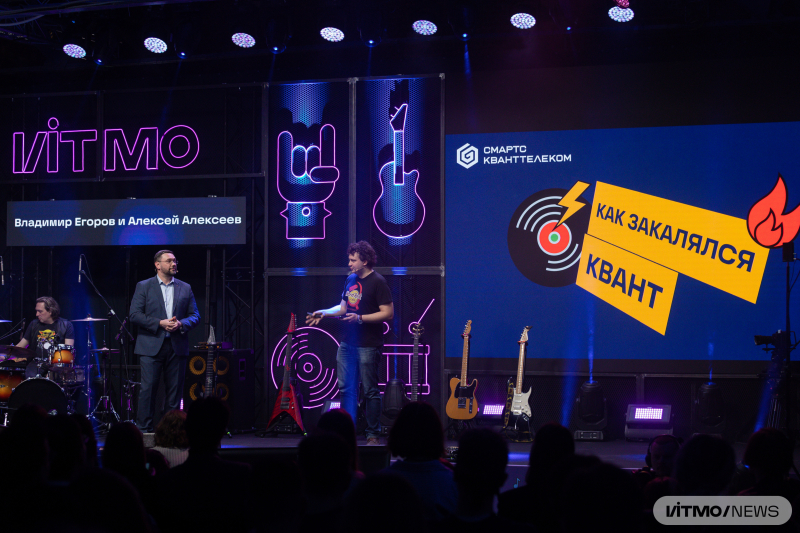
Alexey Alekseev and Vladimir Egorov. Photo by Dmitry Grigoryev / ITMO.NEWS
Optical amplifiers for secure connections
Partner. Perspective Technologies Agency, a company developing systems for information transfer and processing, including those based on quantum technologies.
Research. This partnership has been developing since 2019. The university produces optical amplifiers for underwater use within Polar Express, the transarctic underwater fiber-optic line between Murmansk and Vladivostok, where the agency is the main contractor.
150 underwater amplifiers will be installed along the communication line. Each of them includes six two-channel optical amplification modules that support the necessary power of the optical signal without its optoelectronic transformation. These modules, developed at ITMO, have already been tested and are applied by the company to polish the fiber-optic line technology that makes use of dense wavelength division multiplexing.
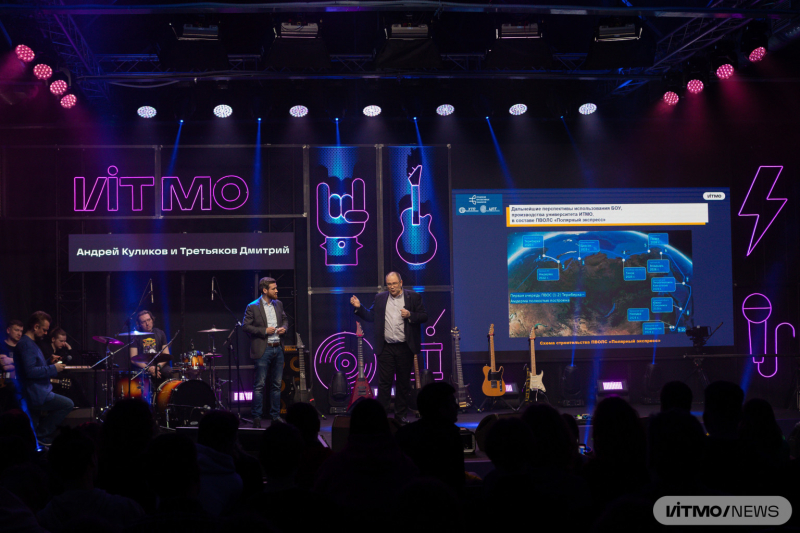
Andrey Kulikov and Dmitry Tretyakov. Photo by Dmitry Grigoryev / ITMO.NEWS
“Right now, we are transitioning from prototyping and batch production to joint full-scale production, which isn’t a typical interaction model for ITMO – but we are planning to implement it with the agency. This collaboration will provide our students with internships and jobs, where they will be able to learn, acquire professional experience, and earn a salary. They will contribute to the development of two-channel erbium fiber-optic amplifiers,” shared Andrey Kulikov, the head of ITMO’s Higher School of Engineering and Technology.
You can find full presentations from ITMO Open Science Rocks here (in Russian) and here’s our story about all the fun that’s unfolded at the conference.
